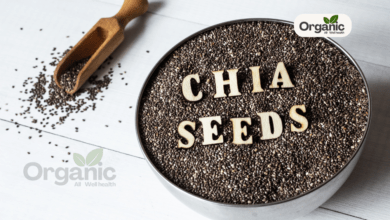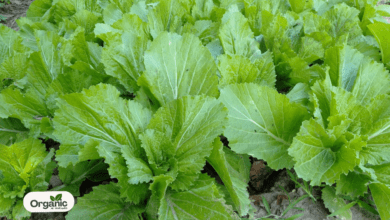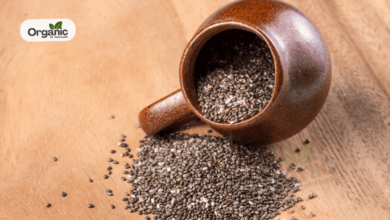How to Read Food Labels Without Being Tricked

In today’s fast-paced world, many consumers are striving to make healthier choices at the grocery store. However, the overwhelming amount of information on food packaging can make this task quite challenging. Understanding how to read food labels without being tricked is essential to make informed dietary decisions and avoid falling for misleading marketing tactics.
This in-depth guide will walk you through how to read food labels without being tricked, decode common claims, and identify genuinely healthy foods. Whether you’re managing a health condition, watching your weight, or just aiming to eat cleaner, these tips — curated by the allwellhealthorganic team — will help empower your grocery shopping experience.
Why Reading Food Labels Matters
The Rise of Health-Conscious Consumers
With increasing awareness around nutrition, more consumers are paying attention to the contents of their food. This demand has led to a surge in “health-focused” food marketing. While this might seem like a win, it also paves the way for deceptive labeling practices that can mislead even the most informed buyers.
How Misleading Labels Affect Your Health
False assumptions based on packaging can lead to increased consumption of hidden sugars, sodium, unhealthy fats, and calories — elements that directly impact chronic conditions like obesity, diabetes, and heart disease. That’s why learning how to read food labels without being tricked is crucial for maintaining long-term health.
Ignore the Front — The Real Story Is on the Back
The Front Label’s “Halo Effect”
The front of a food package is like an advertisement. Words like “healthy,” “natural,” or “low-fat” are often highlighted to catch your eye. However, studies show that these front-label claims create a “health halo”, making people believe the product is more nutritious than it really is.
For example, sugary cereals often use buzzwords like “whole grain” or “fortified with vitamins,” despite containing high levels of sugar. Always flip the product over to check the Nutrition Facts and ingredients list before trusting the front label.
Understanding the Nutrition Facts Panel (Read Food Labels)
Step 1 – Check the Serving Size
One of the first and most important details is the serving size. The nutrition numbers listed on the label are only valid for one serving, but manufacturers often make this portion misleadingly small.
Example:
A bag of chips might list 150 calories per serving, but one serving is just 10 chips, while the whole bag contains 3-4 servings.
Pro Tip: Multiply the calories, sugars, and other values by the number of servings you actually eat.
Step 2 – Calories and Nutrient Breakdown
Look next at:
- Calories per serving
- Total fat, including saturated fat and trans fat
- Cholesterol
- Sodium
- Total carbohydrates, including fiber and sugars
- Protein
- Micronutrients like Vitamin D, calcium, iron, and potassium
High amounts of sodium, sugar, or saturated fats may be red flags, even if the product is marketed as healthy.
Ingredient Lists Reveal the Truth
Know the Order of Ingredients
Ingredients are listed in descending order by weight. The first three ingredients make up the bulk of the product. If sugar, corn syrup, or hydrogenated oil is listed first, that product may not be a healthy choice.
Recognize Hidden Sugars and Fats
Sugar may appear in many disguised forms:
- High-fructose corn syrup
- Dextrose
- Cane juice
- Maltose
- Agave nectar
Similarly, unhealthy fats might be labeled as:
- Hydrogenated oil
- Palm oil
- Lard
A long list of ingredients, especially unrecognizable chemical names, usually signals a highly processed product.
Deceptive Marketing Claims to Watch For
Here’s a breakdown of common labeling tricks that mislead consumers and how to interpret them effectively.
Light
What it sounds like: Low in fat or calories
Reality: Often diluted or has sugar added for taste.
Multigrain
What it sounds like: Contains healthy grains
Reality: Could still be refined grains. Look for “100% whole grain” instead.
Natural
What it sounds like: Free of additives
Reality: There’s no strict definition; “natural” doesn’t mean unprocessed.
Organic
What it sounds like: Healthier overall
Reality: Organic sugar is still sugar. The label doesn’t guarantee nutrition.
No Added Sugar
What it sounds like: Low in sugar
Reality: Natural sugars may still be present in high amounts (e.g., fruit juices).
Low Fat / Low Carb
What it sounds like: Better for weight loss
Reality: Often compensates with extra sugar or additives. Check ingredients.
Made with Whole Grains
What it sounds like: A good source of fiber
Reality: Might contain a small percentage of whole grains. Again, check the ingredient order.
Fortified or Enriched
What it sounds like: Extra healthy
Reality: Nutrients are added — often to compensate for loss during processing.
Gluten-Free
What it sounds like: Healthier alternative
Reality: Many gluten-free foods are still high in sugar and refined starch.
Fruit-Flavored
What it sounds like: Contains real fruit
Reality: Typically includes artificial flavoring, not actual fruit.
Also Read: Healthy life wellhealthorganic in detail
Smart Tips on How to Read Food Labels Without Being Tricked
1. Compare Similar Products
Don’t rely on the first item you see. Compare two or three brands of the same product. Check for better fiber content, lower sugar, or more whole ingredients.
2. Understand % Daily Value
The “%DV” shows how much a nutrient in one serving contributes to your daily diet. A good rule:
- 5% or less = low
- 20% or more = high
Use %DV to evaluate sodium, saturated fat, and added sugars carefully.
3. Choose Whole Foods First
When possible, buy unprocessed, whole foods like fruits, vegetables, legumes, and grains. These don’t require labels because they contain one simple ingredient.
4. Use Trusted Resources
Refer to credible health sources or registered dietitians for advice. Websites like allwellhealthorganic frequently review wellness products, offering transparent and research-backed recommendations.
How Allwellhealthorganic Encourages Label Literacy
The team at allwellhealthorganic believes in promoting honest, clear, and well-informed health choices. As a platform that reviews the latest in wellness, tech, and health-related products, the website is dedicated to helping readers:
- Spot labeling red flags
- Understand nutrition facts
- Avoid over-processed “health” foods
- Choose better alternatives
By learning how to read food labels without being tricked, you can reclaim control over your food decisions.
Final Takeaway | Read Food Labels
You don’t have to be a nutritionist to make healthier choices — just an informed consumer. Reading food labels carefully gives you a major advantage in identifying products that genuinely support your well-being.
Remember:
- Don’t trust the front label.
- Read the full Nutrition Facts and ingredients list.
- Be skeptical of overly processed items with misleading health claims.
- Choose whole foods when possible.
Disclaimer: This advice is for general informational purposes only. It is not a substitute for professional medical advice. Always consult an expert or your own doctor for more information. WellHealthOrganic is not responsible for the accuracy of this information.



